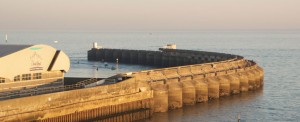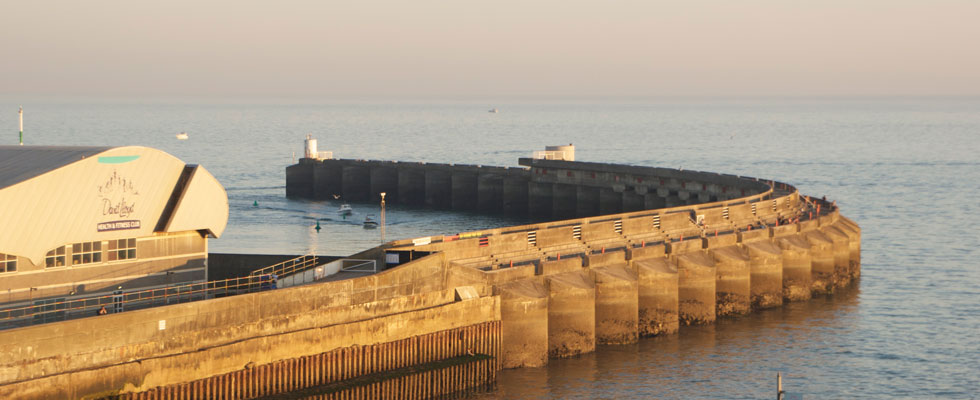 [contentbox headline=”Your headline” type=”info”]Brighton Marina is an artificial marina situated in Brighton, England. The construction of the marina itself took place between 1971 and 1979, although developments within it have continued ever since. The marina covers an area of approximately 127 acres (0.51 km2). It is owned and managed by Premier Marinas.
[contentbox headline=”Your headline” type=”info”]Brighton Marina is an artificial marina situated in Brighton, England. The construction of the marina itself took place between 1971 and 1979, although developments within it have continued ever since. The marina covers an area of approximately 127 acres (0.51 km2). It is owned and managed by Premier Marinas.
The land within the marina has been developed in several stages and now accommodates a large Asda supermarket and two groups of boutique shops, restaurants and bars, plus a hotel, a bowling alley, a health club, a casino, and a multiplex cinema with a multi-storey car-park built over and around it. On the east side of the marina there are several gated communities consisting of townhouses and apartments, some of which come with their own moorings, alongside public moorings and facilities for boats and their users, ranging from boat sales and service companies through to a floating launderette at the main moorings. Both harbour arms are popular locations for local fishermen; the east breakwater is often packed to capacity during summer weekends, and there are regular sightseeing and fishing boat trips from the marina.
A SeaJet service ran from the Marina to Dieppe in France between 1979 and 1980. Two Boeing Jetfoils were used, with three “flights” per day. The service suffered from poor reliability of the Jetfoils in the early stages, was restricted due to mid-channel wave height, and suffered during the French fishermen’s blockade of channel ports.

Ferry to Fécamp, 1992
In 1992 there was a trial of summer-season passenger services to Fécamp, France, using a small catamaran ferry.
Immediately to the west of the marina is Black Rock, wasteground which was once a lido and is to be redeveloped into an arena.
Yacht sailing, powerboating, and dinghy sailing training and charter is offered by a number of operators within Brighton Marina.
Ongoing developments
Work was due to begin in spring 2007 on a new district of the marina to contain 853 new apartments, cafés, bars and restaurants. The development was planned for the south-western part of the marina and would partly sit on stilts over the sea. The centrepiece building was to be a skyscraper dubbed The Roaring Forties which would stand at 40 storeys tall and include a public viewing platform on the top floor. Two new pedestrian bridges were to be included in the scheme, one retractable to link the marina arms and the second to link the western beach with the new scheme. The developers are local firm Brunswick, and the architects are Wilkinson Eyre, noted for Gateshead Millennium Bridge. CABE have highlighted the development as one of four national developments demonstrating best practice in design and planning. No significant building work has started and the whole project has now been put on hold in view of the current financial climate.
A planning application to redevelop much of the west side of the marina was submitted in October 2007. The plans include several tall apartment blocks (the tallest would be Marina Point which would be 28 storeys high and Quayside which was to be 16 storeys), various new retail provisions including small shops, a new central square (where the current roundabout stands) and an “eco park”, connected to the Undercliff Walk. The supermarket would be demolished and rebuilt to a larger size with car parking underground and apartments above, freeing up the considerable space presently used for its open-air car park, allowing for further development. The petrol station and McDonalds would also be demolished and rebuilt under this scheme. Around five new apartment blocks would be added to the marina in total. The developers are Explore Living, a division of Laing O’Rourke, and the architects are Allies and Morrison. Planning permission for this scheme was refused on 12 December 2008 when the six Conservative and three Green members of the planning committee voted against it, with only the three Labour members voting in favour.
There has been considerable local opposition to both the above developments, which have been accused of being inappropriate, too dense, damaging to the Brighton skyline and to cliff and sea views, and in breach of the provision of the Brighton Marina Act 1968 that no building should exceed cliff height (approximately seven storeys). The main campaigning organisation is save brighton which is coordinating opposition from individual residents, residents’ organisations and amenity groups. The campaign was launched in November 2007. The founder of save brighton, Brian Simpson, has called for the “gross over development of Brighton Marina” to be stopped.
[/contentbox]
